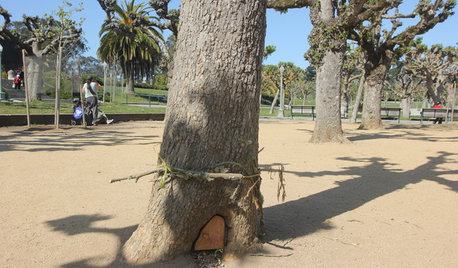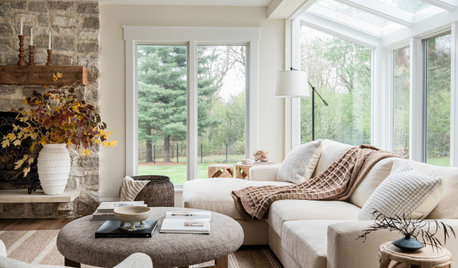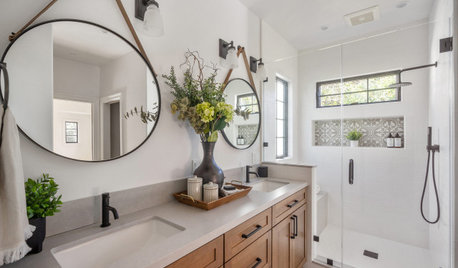Did I make a mistake? (Do I need to repot?)
goddess9
12 years ago
Related Stories

MOST POPULARSo You Say: 30 Design Mistakes You Should Never Make
Drop the paint can, step away from the brick and read this remodeling advice from people who’ve been there
Full Story
WALL TREATMENTSDouble Take: How Did They Make That Mondrian-Inspired Wall?
Bright colors and wood grains create an artful midcentury modern feature in this Southern California living room
Full Story
FUN HOUZZDid Elves Make a Home in a San Francisco Park?
Speculation has swirled around a Lilliputian doorway in Golden Gate Park. We give you the true story — and a design dilemma
Full Story
DECORATING GUIDESFix Those 'Whoopsies': 9 Fast Solutions for Decorating Mistakes
Don't suffer in silence over a paint, furniture or rug snafu — these affordable workarounds can help
Full Story
DECORATING GUIDESFrom Queasy Colors to Killer Tables: Your Worst Decorating Mistakes
Houzzers spill the beans about buying blunders, painting problems and DIY disasters
Full Story
DECORATING GUIDES7 Major Decorating Mistakes and How to Avoid Them
Gain confidence to start your interior design project with this advice from a professional designer
Full Story
REMODELING GUIDESGet the Lighting Right: 8 Mistakes to Avoid
See How These Great Interiors Found the Right Lighting Solutions
Full Story
BATHROOM DESIGN5 Common Bathroom Design Mistakes to Avoid
Get your bath right for the long haul by dodging these blunders in toilet placement, shower type and more
Full Story
BUDGETING YOUR PROJECTHouzz Call: What Did Your Kitchen Renovation Teach You About Budgeting?
Cost is often the biggest shocker in a home renovation project. Share your wisdom to help your fellow Houzzers
Full Story
Let's Dish! Did You Watch the Flipping Out Premiere?
Contemporary Remodel Kicks off Design Show's New Season. What Did You Think?
Full StoryMore Discussions









tapla (mid-Michigan, USDA z5b-6a)
goddess9Original Author
Related Professionals
Beachwood Landscape Architects & Landscape Designers · Mount Wilson Landscape Architects & Landscape Designers · Elgin Landscape Contractors · Aberdeen Landscape Contractors · Dallas Landscape Contractors · Galveston Landscape Contractors · Lake Zurich Landscape Contractors · Milford Landscape Contractors · Palatine Landscape Contractors · Ringwood Landscape Contractors · The Woodlands Landscape Contractors · Vashon Landscape Contractors · West Covina Landscape Contractors · Mount Vernon Interior Designers & Decorators · Hagerstown Interior Designers & Decoratorstapla (mid-Michigan, USDA z5b-6a)
goddess9Original Author
tapla (mid-Michigan, USDA z5b-6a)
goddess9Original Author
tapla (mid-Michigan, USDA z5b-6a)
goddess9Original Author
tapla (mid-Michigan, USDA z5b-6a)